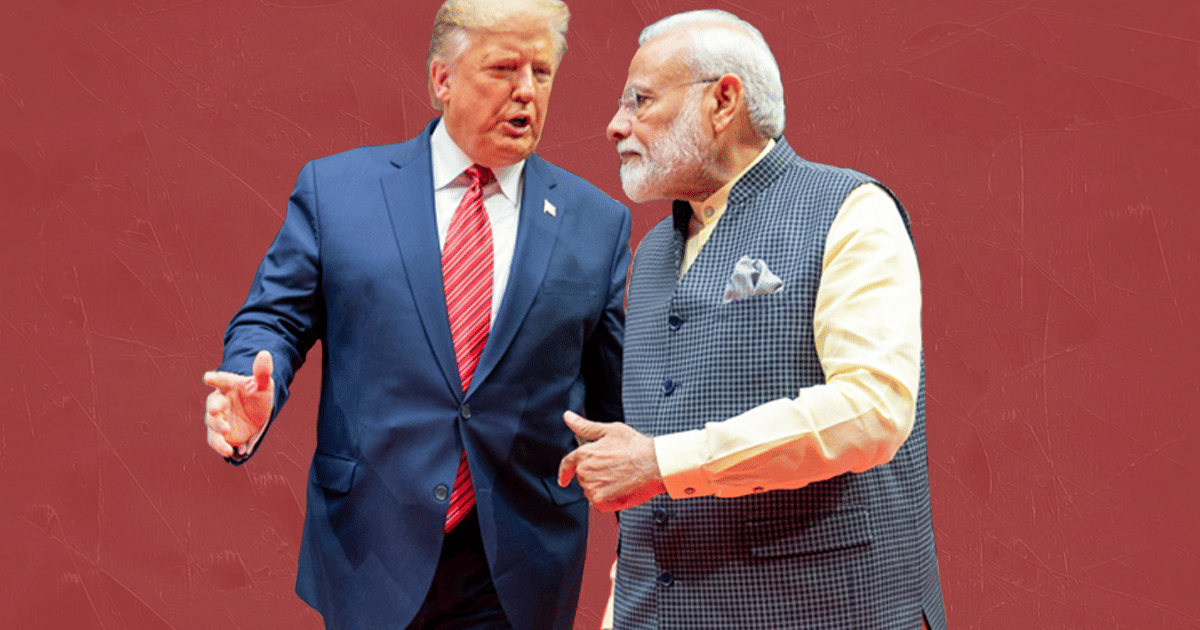 |
|
The article details India's proactive measures to mitigate the potential impact of impending US tariff hikes on its exports. The Trump administration's stated intention to impose reciprocal tariffs, citing India's higher tariffs on American imports, has spurred a comprehensive sector-wise analysis within various Indian ministries and departments. This analysis aims to anticipate the consequences of such a move and formulate effective countermeasures that comply with World Trade Organization (WTO) regulations. The Indian government is undertaking a thorough review of its tariff structure, carefully considering the implications for various sectors of its economy. The urgency stems from the significant trade volume between India and the United States, making the potential impact of these tariff hikes substantial. The core challenge lies in balancing the need to protect domestic industries with the imperative of maintaining a stable and predictable trade relationship with the US. The complexities of international trade and the intricate web of WTO agreements add to the difficulty of devising an optimal response. The analysis takes into account the current tariff structure, examining the average weighted tariffs and identifying sectors particularly vulnerable to US tariffs. The research meticulously assesses the potential losses across different export categories, predicting economic impacts based on varying scenarios of tariff increases. The Indian government is working to ensure that any adjustment to its tariffs remains within the bounds of its WTO commitments and adheres to the Most Favoured Nation (MFN) principle.
Experts suggest various strategies India could pursue. One approach involves strategically revising import duties on certain products. This might involve lowering tariffs on specific goods imported from the US, aiming to appease concerns about trade imbalances and encourage reciprocal reductions in US tariffs on Indian exports. This tactic is a delicate balancing act; lowering tariffs on certain items could impact domestic industries, while failing to achieve the desired reciprocal reduction from the US could negate the benefits. Another option is to improve market access for US goods in India, potentially streamlining import procedures or relaxing certain regulatory hurdles. This could demonstrate goodwill and potentially incentivize the US to adopt a more conciliatory stance. However, such concessions need careful consideration to avoid undermining domestic producers. A third strategy, though more aggressive, involves potential retaliatory tariffs on US goods. This approach carries the risk of escalating trade tensions and triggering a broader trade war. The use of retaliatory tariffs is considered a last resort, to be used only if diplomatic efforts and targeted tariff adjustments fail to produce satisfactory outcomes. This strategy is inherently risky, with the potential for severe negative repercussions for both economies.
The article underscores the importance of adhering to WTO agreements and the MFN principle. India’s current MFN-weighted average import tariff is relatively low, around 5-6 percent, considerably lower than the tariffs bound under WTO agreements. This demonstrates India’s commitment to fair and open trade practices. While India cannot implement country-specific tariffs, which would violate the MFN principle, it can adopt a calibrated approach, focusing on specific products traded bilaterally with the US. This requires a careful analysis of the trade flows, identifying products where tariff adjustments can have a positive impact on the trade balance and minimize negative repercussions on the domestic economy. The government's emphasis on WTO compliance is crucial, as any unilateral actions violating these agreements could invite retaliatory measures or dispute settlement processes under the WTO framework. The article highlights statements from officials and experts, emphasizing the need for a measured response. The exact nature of the response will be shaped by the formal announcements made by the incoming Trump administration. Until then, strategic planning and meticulous analysis are crucial to ensuring a well-informed and effective response. The ongoing analysis also considers the broader economic context, including the global trade landscape and the potential impact on other trading partners. This includes anticipating any ripple effects of any trade disputes between the US and India on other countries.
The situation emphasizes the complex and interconnected nature of international trade. The dependence of both the US and Indian economies on each other’s markets presents a powerful incentive for finding a mutually acceptable solution. The resolution of this potential trade conflict will necessitate a nuanced understanding of the underlying economic forces, geopolitical considerations, and the legal framework governing international trade. The importance of multilateral diplomacy and collaboration cannot be overstated. India's willingness to engage in dialogue and explore WTO-compliant mechanisms underscores its commitment to a fair and balanced trade relationship with the US, while safeguarding its own economic interests. The eventual outcome will likely depend on the balance between protecting domestic industries, maintaining amicable relations with a major trading partner, and adhering to the rules-based international trade system embodied in the WTO. The process of negotiation and compromise will be long and challenging, requiring a fine balance between assertive defense of national interests and a commitment to peaceful resolution of trade disputes. The successful outcome depends not just on strategic responses but on effective diplomatic engagement and a willingness to explore all available avenues for a mutually beneficial solution.
Source: India Prepares For Potential US Tariff Hike With WTO-Compliant Strategies And Trade Tweaks
